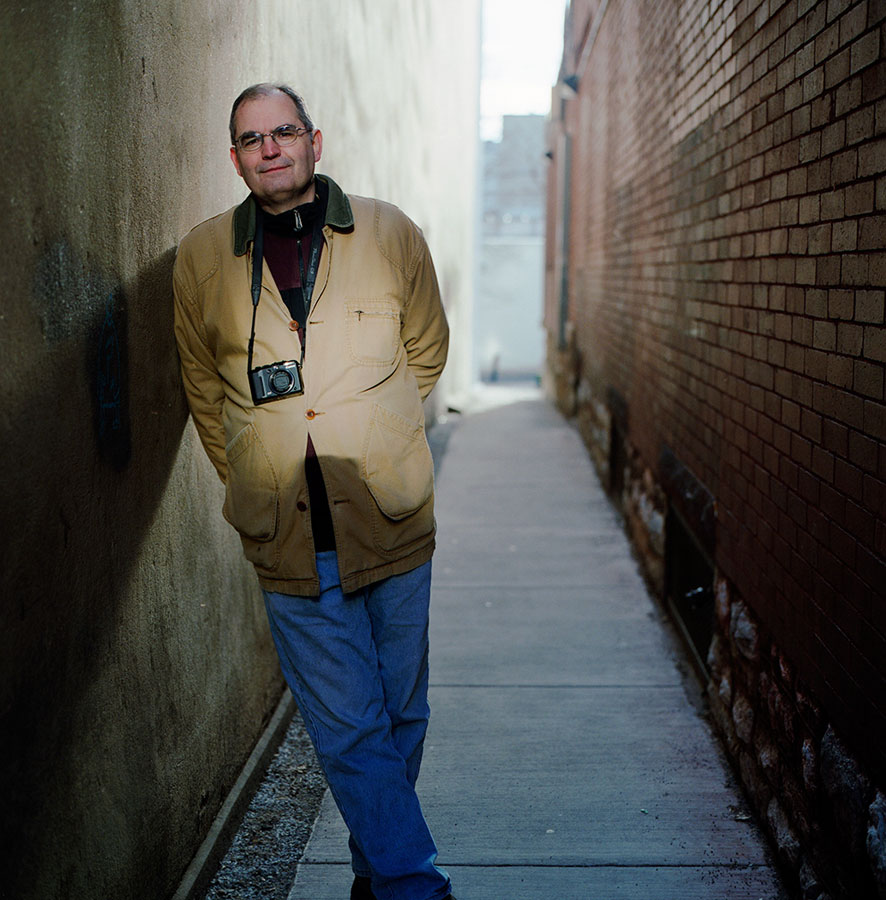Confined in Wide Open Spaces
Thinking about an open concept versus rooms with walls. The common interpretation would refer to the architectural approaches to living and working spaces. Bright, open spaces with vaulted ceilings and window walls as opposed to more conservative and confined areas that may be secreted and cut off from the rest.
The same model could be applied to the mind. And even to some degree to riding a scooter or motorcycle.
My head inside a full face helmet; a mind inside isolated from the outside world. Life inside little boxes. Even riding in wide open spaces I remain confined in those little boxes.
 Small Spaces
Small Spaces
The narrow walkway between buildings in State College, Pennsylvania feels safe in the closeness of the walls and the protection against the sky. It’s as if you’re cut off from much of the world — a decidedly non-open concept for space.
There was a time when the open concept held my imagination and fueled dreams of adventure in the wild and open spaces of the world. Over time I’ve realized I’m predisposed to a compartmentalized existence which affords opportunities for invisibility, isolation and privacy. But more powerful is the sense of self and focus I find in the small spaces where the yawning abyss is not drawing energy and concern. While the open concept and space is seductive, it ultimately leaves me entirely reactive — I see and respond. It’s visceral and fires emotions. But ultimately I retreat to a little box where I’m free to think.
When I was younger I would have thought the rooms with walls would be a prison. Could be for me they may be the doorway to freedom.


Several years ago I heard an architect in an NPR story lamenting a trend in residential design, that of homes being much larger than anyone would need, with vast open spaces and vaulted ceilings and whatnot.
His concern was that dwellings were on track to resemble public structures, such as municipal and court buildings and libraries. His argument was that public structures should be spacious and vaulted, representing the power of a people striving for shared goals; and homes modest and intimate, promoting closeness and meaningful conversation.
I’ve always been a fan of small spaces if for no other reason than there’s less to maintain.
Having long lived in one of those overly spacious homes with an open floor plan I am now enjoying an apartment in a 1928 building with individual smaller and bigger rooms, and a separate kitchen with a door. I simply love being able to close a door behind me and feel the privacy, protection and calm of that separate space. There must be some ancient part of our brains that is drawn to doors, smaller spaces and all that comes with it.
The worst to me are open plan living rooms with double height ceilings. These truly feel like public spaces, offering none of what I want and need from a private space.
My daughter lives in the smallest room in the house. When her older brothers moved out she was offered to move into the bigger rooms. She said the closeness gave her a feeling of safety.
Enter through the narrow gate; for the gate is wide and the road is easy that leads to destruction, and there are many who take it. For the gate is narrow and the road is hard that leads to life, and there are few who find it. Mt 7:13, 14
Jesus said: I am the Way, the Truth and the Life. Jn 14:6
Many years ago there was a mid-West architect who gained much fame for proposing smaller, better-designed residences as opposed to larger, poorly-designed structures. Sarah Susanka and her “Not So Big House” book series. The difficulty with the new proposal was that it cost even more to build a well-designed home than a “plan” house of larger proportions and despite vehement denial, many people want more to show off their wealth than enjoy a peaceful abode. I guess it all goes back to those feudal European country homes (that all the lower-civil levels could see but never enter) that perpetuated into the American colonies. Maybe why all those BBC Masterpiece dramas are so popular. It’s the reason that most of the windows in a residence are on the street side regardless of solar orientation (windows were a very expensive luxury; lots of windows signified wealth; you put your ego on the most visible side – the money side – of the building) and why brick or stone facing is used mostly on the street side. It goes back to the old project manager maxim – “Do you want your solution good, quick or cheap? Pick one.” But for that answer you need to be completely honest with yourself to determine what’s “good” and why.
Saw the title “Little Boxes” and thought of the song of Tom Lehrer, which dates me.
I do think the photo of Steve leaning against the wall to be so very poignant; as opposed to the mad man in the motorcycle helmet as the header photograph.
And then the era of monster homes appeared, where the new homes are bigger and bigger, built out to the extremes of the purchased building lot, bigger is better? Maybe so however, if such is the case and there are how many bathrooms? who will clean those bathrooms when you get older than you are now and unable to afford to pay somebody to clean those bathrooms or the remainder the house for that matter?
I lived in Brooklyn for several years where everything was compact because of cost per space. I adapted. We moved next to a large log home on four acres with a two car garage. I adapted. Now I live on a half acre in a development. I’m adapting.
That’s the beauty of being open to change. Space isn’t as important as quality of life and being with those you love.
I agree Jim. One of the exceptional traits of humans is the ability to adapt. One of the frustrating ones is resistance to change. Funny how that works…